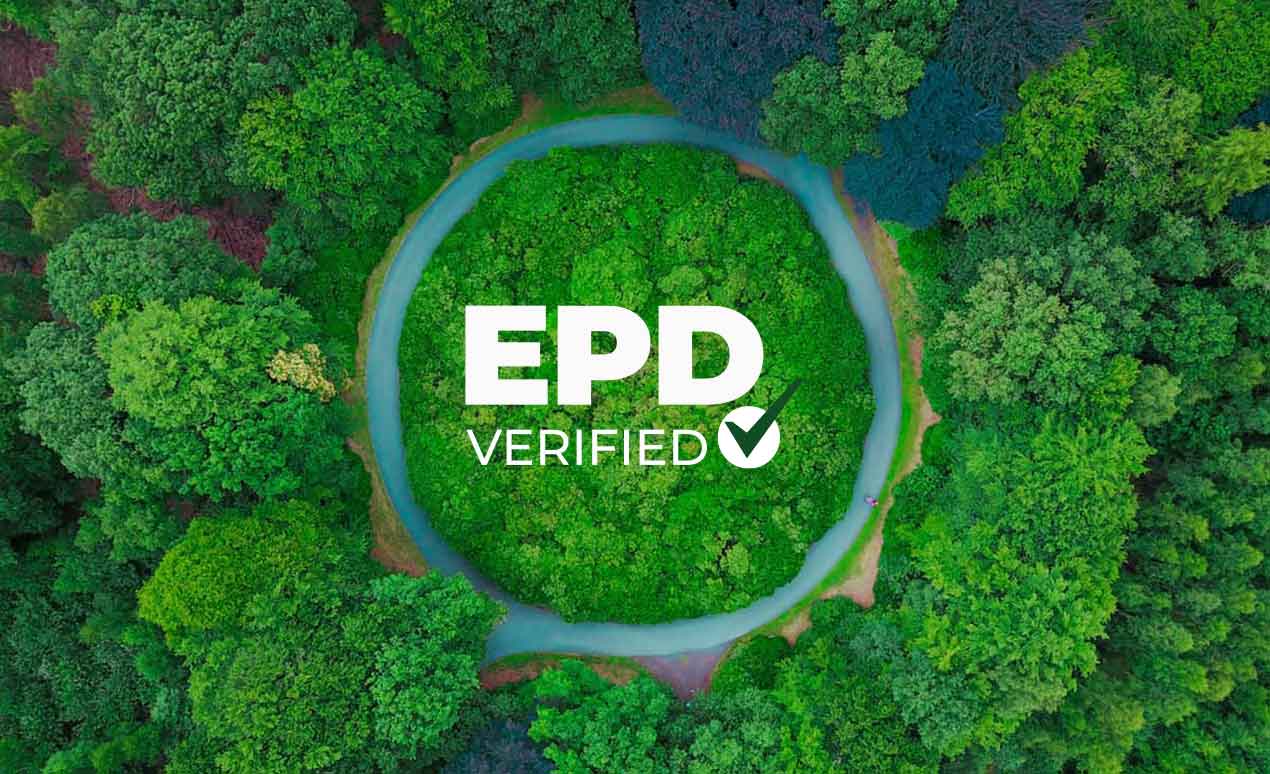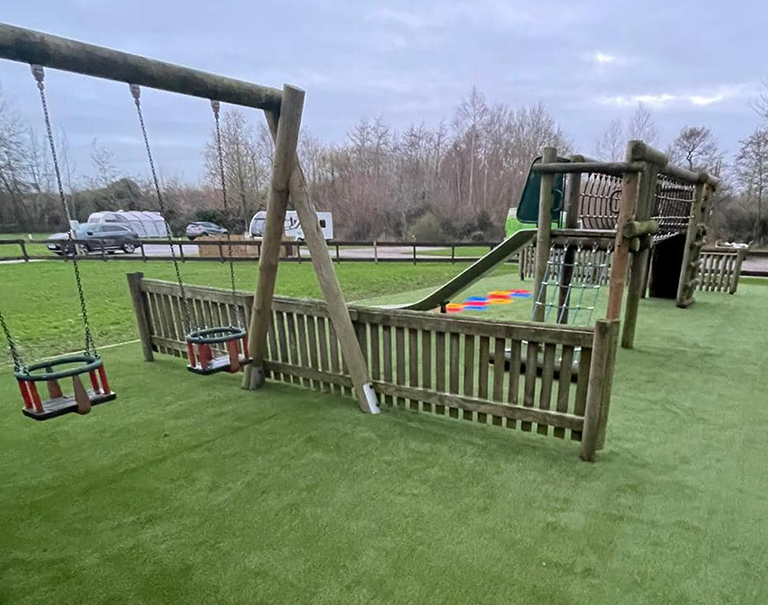We are delighted to announce another important milestone: our revolutionary 100% circular artificial grass, ONE-DNA™, has received a verified Environmental Product Declaration (EPD). This achievement underlines our unwavering commitment to sustainability and cements our leadership in the industry. It confirms our position as a pioneer in sustainable manufacturing and sets a new industry standard.
These declarations will soon be available on the Dutch Environmental Database and globally at Eco platform, providing an unprecedented level of insight into our commitment to sustainability.
Our continued focus on research and development plays a key role in the development of the next generation of artificial turf. Achieving a certified EPD for our range underlines our commitment to transparency and helps us – and our customers – to understand the environmental impact of our products in a clear and transparent way.
What is an EPD?
An Environmental Product Declaration (EPD) is an objective, validated and independent document that details the environmental performance of a product, enabling comparisons to be made between products that perform the same function. EPDs are primarily a guide for businesses, but also provide valuable information for consumers who want to know more about the environmental impact of products.
An Environmental Product Declaration (EPD) is prepared according to specific international standards to ensure consistency, reliability and comparability of environmental information. The main standards related to EPDs are part of the ISO 14000 series for environmental management, specifically
- ISO 14025:2006 – This standard provides the principles and specifications for Environmental Product Declarations (EPD). ISO 14025 defines Type III environmental declarations and describes how they should be developed, verified and used. This standard is essential for understanding the role of EPD’s within the broader framework of environmental labelling and declarations.
- ISO 14040:2006 – This standard describes the principles and framework for conducting a Life Cycle Assessment (LCA), which is the basis for developing an EPD. It covers the definitions, objectives and scope of LCA, including the life cycle inventory, impact assessment and interpretation phases.
- ISO 14044:2006 – This standard provides the requirements and guidelines for conducting a life cycle assessment in accordance with ISO 14040. It covers methodological choices, application of LCA results and reporting requirements. ISO 14044 is critical to ensuring the quality and consistency of the LCA underlying an EPD.
Together, these standards provide a consistent approach to measuring and reporting the environmental impacts of products throughout their life cycle. This enables organisations to develop EPDs that are internationally recognised and comparable, contributing to greater transparency and helping to make informed sustainability decisions.
How is an EPD useful?
An Environmental Product Declaration (EPD) is useful to several groups, each with their own reasons for appreciating the detailed environmental data an EPD provides:
- Architects and building designers: They use EPDs to make material and product choices that minimise the environmental impact of their projects. An EPD can help them meet sustainable building criteria and earn points in sustainability certifications such as LEED or BREEAM.
- Contractors and construction companies: These professionals use EPDs to select materials and products that meet specific sustainability requirements, often as part of green building projects or tenders where environmental impact is taken into account.
- Clients and project developers: Clients who value sustainability want to be assured that the materials and products used in their projects have a low environmental impact. EPDs provide them with a reliable basis for making this assessment.
- Governments and policy makers: EPDs can be used by government agencies as a tool for setting environmental policies, standards and procurement requirements. They help to promote sustainable production and consumption in industry.
- Sustainability professionals and environmental consultants: EPDs are an essential source of data for life cycle assessments (LCA) and other environmental assessments for professionals involved in environmental impact assessment and sustainability consulting.
- Consumers and end-users: Although EPDs are technical and detailed, informed consumers and organisations committed to sustainable purchasing can use EPDs to select products with a lower environmental impact.
Our commitment to the environment is woven into everything we do. We pride ourselves on our ability to combine innovation and craftsmanship with a commitment to environmentally responsible design and manufacturing. By achieving these EPDs, we are taking a big step towards a more sustainable and healthier future for our customers and partners. We look forward to introducing more EPDs in the near future.
















